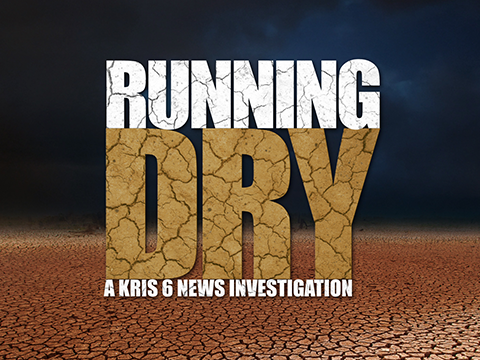- Black Mangrove Seeds come from Black Mangrove shrubs/small trees, and they typically wash ashore every fall.
- There has been a large amount of the seeds washing ashore on Padre Island beaches recently.
- Jace Tunnell from the Harte Research Institute says they are very beneficial to the Texas coast because they help build a better shoreline.
- You'll most likely see them washing ashore throughout the months of November and December.
If you've been to the beaches of the Coastal Bend lately, you may have noticed big green seeds washing ashore. While they may be green, they're called Black Mangrove Seeds, and they come from Black Mangrove shrubs/small trees that grow in muddy areas like the bays.
“It’s a seed that comes off of a bush that we find back up in the bay systems here along the Texas Coast." Jace Tunnell, the Texas A&M University-Corpus Christi Harte Research Institute Director of Community Engagement, said.
In one of Tunnell's recent beachcombing reports, he said Black Mangrove Seeds are "the future of our coastal forests" because they have the potential to take root and grow, which will then help protect the shoreline from storms and erosion. They also serve as a habitat for several marine species, such as fish and crabs.
“You’ll see like a little stalk that comes off of it. That's actually the root system. Once they get to where they’re going, they plant themselves, and they have a root system that stabilizes the shoreline. And so that’s what makes them good about the area that we’re at here," Tunnell said.
They normally wash ashore on the beaches of the Coastal Bend during the fall months.
"Usually in November through December, we'll find these washing up. And then once we get into winter time, there will be fewer and fewer until the next fall," Tunnell said.
While the Black Mangrove Seeds wash ashore on the beach, that's not where they typically take root and grow.
“We find these on the beach, but they really wouldn’t grow on the beach. There's too much wave action here and movement of sand, so where you’re going to find these growing is back up in the bays," Tunnell said.
Tunnell said the seeds washing shore now probably made their way to the coast from the warm Gulf waters through the Aransas and Packery channels and dropped back off at the beach. The recent high tides helped to reveal the Black Mangrove Seeds.
Some beachgoers on the island were not surprised to see the seeds back on the beach.
“I’ve seen a bunch of them upshore, like down there more. Last year there was more on the beach than there were this year," Thailesha Alexander, a beach goer at Whitecap Beach said.
Tunnell encourages beachgoers to take pictures and admire these seeds on the beach.
"Next time you see one, and it's got this green color, if you wanted to, you could actually take it home and plant it, if you have saltwater in your yard, and watch it grow."
“That’s actually pretty cool. I didn't know that. I just thought they were just random seeds that were on the ground or something, but that’s pretty cool to know that it helps with the environment and everything," Alexander said.
Tunnell said the Black Mangrove Seeds can last outside on the beach for up to a year, and they will continue washing up throughout November and December.
For the latest local news updates, click here, or download the KRIS 6 News App.





